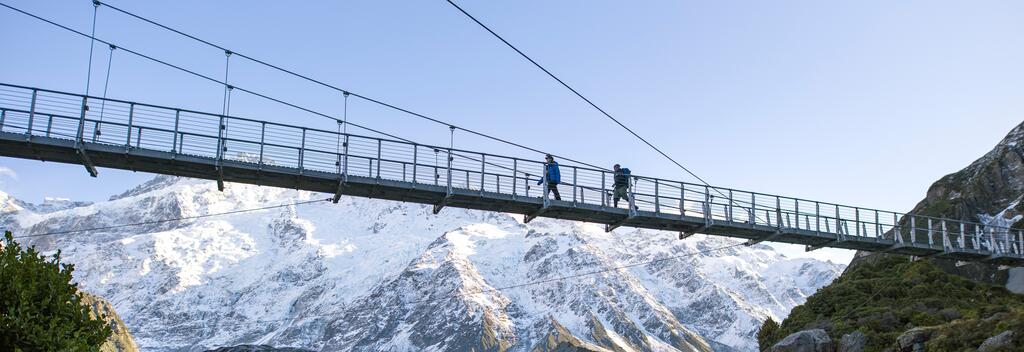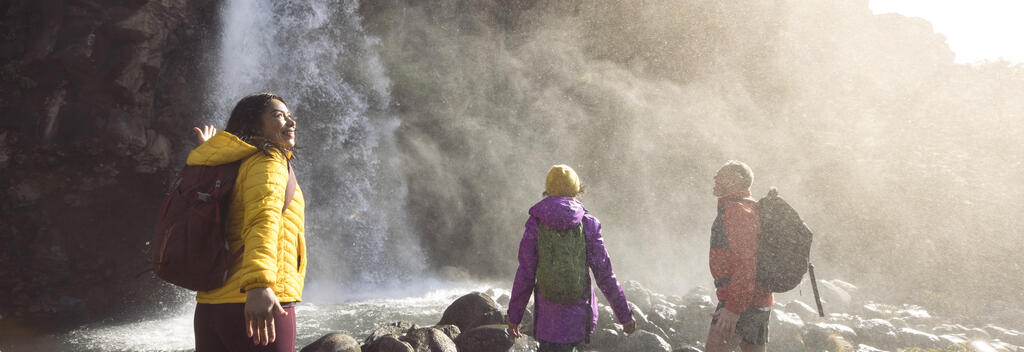New Zealand’s snowy mountains come alive in winter, and the crisp days are perfect for the ultimate winter holiday.
New Zealand is in the Southern Hemisphere, so its seasons are the opposite of the Northern Hemisphere. This means a New Zealand winter is from June–August, with the coldest month in July.
Winter temperatures are generally cool, but they vary considerably by region. The alpine conditions of the Southern Alps, for example, are very different from the subtropical climate of the far north. Or to put it another way: gloves and a woolly hat have a utilitarian purpose in Queenstown, but they are usually worn to complete an outfit in Auckland.
New Zealand’s varied climate is caused by a bunch of factors best explained by meteorologists. But, put simply, it has to do with latitude, the surrounding ocean, prevailing westerly winds, and New Zealand’s rugged topography – i.e., mountain ranges that begin at sea level. Basically, New Zealand is home to a lot of microclimates.
Average winter temperatures by region:
City Min Max
Auckland 8°C (46°F) 16°C (61°F)
Wellington 7°C (45°F) 12°C (54°F)
Queenstown 0°C (32°F) 8°C (46°F)
Invercargill 1°C (34°F) 10°C (50°F)


Good news first: the South Island has less rain in winter than at other times of the year. However, for the North Island the opposite is true. If you’re wondering how much they get more or less of, for most places it’s around 0.5–1.5m of rain each year.
Although, there are plenty of fascinating exceptions: Central Otago, for example, is prone to drought but just 150km away at Cropp River the annual rainfall is 10m – which makes it one of the wettest regions in the world.
New Zealand also gets its fair share of snow. The white stuff mostly falls in the mountains, but occasionally it gets down to sea level in the South Island.
In winter, New Zealand’s sunniest region is Marlborough. It’s famous for its sunny winter days but also their flipside: cold, frosty nights.
New Zealand has high UV levels, which is why health professionals in this part of the world are fond of the expression “be sun smart”. This means wearing sunscreen and sunglasses (and, ideally, a sun hat) even in winter if you’re outside for extended periods.
In New Zealand’s relatively empty corner of the Pacific Ocean, there isn’t much to slow down the strong westerly winds that sweep through the region. The roaring forties, as these winds are known, particularly affect Wellington and are responsible for the unglamorous title of world’s windiest major city.
The winter traveller will be pleased to note that wind speeds drop across the country from mid-autumn to end of winter (April to August). But they soon pick up again in Spring – as any Wellingtonian can tell you.
Thermal gear, waterproofs, and sturdy walking shoes are highly recommended because it can get wet, windy, and icy out there.
Sunscreen and sunglasses are worn all year round by Kiwis because New Zealand has high UV levels. And whilst you might not need them every day, you’re unlikely to regret having them to hand.
Insect repellent is a good idea. Most parts of New Zealand, particularly in the north, stay warm enough for mosquitoes to be active all year round.

New Zealand is a safe place to travel, but winter can bring some additional challenges. Here’s all you need to know about how to stay safe. Remember to pack chains for your vehicle if driving in the snowy south in peak season.